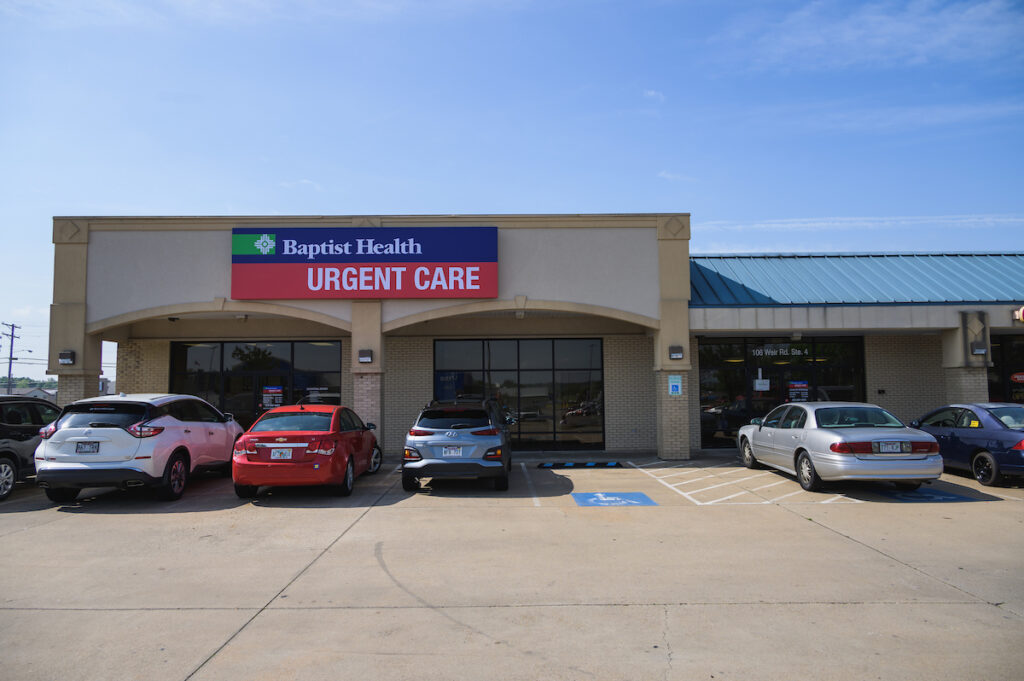Comparing Urgent Care Clinics: What Establishes Our Clinic Apart
Comparing Urgent Care Clinics: What Establishes Our Clinic Apart
Blog Article
The Value of Urgent Care Centers in Linking the Space Between Health Care and Emergency Situation Services
Urgent care centers have actually arised as an essential component of the medical care landscape, successfully resolving the important requirement for prompt clinical focus without resorting to emergency situation services. The evolving role of immediate care facilities elevates vital concerns about their combination within the wider health care system and the implications for person outcomes and resource allocation.
Review of Urgent Treatment Centers
Urgent treatment centers have actually become a vital component of the medical care shipment system, providing accessible clinical services for non-life-threatening problems. These facilities commonly run outdoors typical workplace hours, offering patients an alternative to emergency situation spaces and health care settings. Individuals seeking urgent treatment commonly present with problems such as small injuries, infections, or diseases that call for prompt interest yet do not position a prompt risk to life or arm or leg.
Immediate care centers are staffed by an array of health care experts, consisting of doctors, registered nurse experts, and medical professional aides, who are equipped to identify and deal with numerous clinical concerns. They often feature analysis devices such as X-ray machines and lab solutions, allowing them to supply comprehensive care on-site.
The establishment of urgent treatment facilities has actually been influenced by the enhancing demand for timely clinical services in a fast-paced culture, where patients might struggle to protect visits with medical care providers. Because of this, these centers aim to ease blockage in emergency situation divisions, boosting total medical care performance. In addition, urgent treatment centers usually function as a bridge in between health care and emergency situation solutions, making certain that clients obtain ideal treatment tailored to their specific medical demands.

Benefits of Urgent Care Solutions
Accessing prompt treatment is a substantial benefit of immediate care services. These centers supply prompt focus for non-life-threatening problems, effectively decreasing wait times contrasted to typical emergency situation divisions. Patients seeking care for minor injuries, ailments, or urgent health and wellness issues can acquire treatment without the long delays typically connected with healthcare facility brows through.
One more key benefit is the extensive hours of operation. Many immediate treatment facilities are open evenings and weekend breaks, fitting individuals who may not have the ability to see their main care carrier during basic office hours. This adaptability makes urgent care an easily accessible alternative for those with hectic routines or abrupt wellness problems.
In addition, immediate care facilities often use a large range of services, consisting of analysis screening, X-rays, and basic laboratory services. This extensive approach enables fast diagnosis and treatment, boosting client fulfillment.
Furthermore, urgent treatment facilities are usually much more cost-effective than emergency clinic, making them an attractive alternative for people without insurance coverage or those with high-deductible plans. Overall, immediate care solutions play an important role in offering available, timely, and budget friendly healthcare.
Comparison With Medical Care
Commonly, clients usually evaluate their options between immediate treatment centers and medical care carriers when seeking medical attention. Both serve necessary roles in the health care system, yet they differ considerably in availability, range, and cost.
Medical care suppliers are usually the initial factor of contact for clients, concentrating on lasting wellness management, preventive care, and chronic illness administration. They offer continuity of treatment, promoting a patient-provider connection that permits for comprehensive health and wellness analyses and tailored therapy plans. However, scheduling an appointment can be taxing, often requiring days or weeks ahead of time.
In comparison, urgent care centers provide immediate care for non-life-threatening conditions that need timely interest, such as minor injuries or infections. These centers often operate beyond typical office hours, fitting individuals who may not have the ability to see their health care service provider throughout normal organization times. In addition, urgent treatment is usually extra economical than emergency clinic visits, making it an appealing choice for those with resource limited medical care access.
Ultimately, while immediate care facilities and health care service providers both add to client health and wellness, they accommodate unique needs, making it critical for individuals to identify which alternative ideal straightens with their situations.
Emergency Providers Communication
The interaction in between immediate care centers and emergency situation services is a crucial element of the healthcare landscape, specifically when clients deal with scenarios that might intensify in intensity. Immediate care facilities serve as a bridge in between health care and emergency situation departments, attending to non-life-threatening conditions that require immediate interest. This cooperation boosts individual outcomes and maximizes resource allocation within the health care system.
When people offer with not lethal yet immediate problems, urgent care centers can efficiently manage their needs, easing blockage in emergency areas. Facilities equipped with diagnostic capabilities can promote prompt referrals to emergency situation solutions when a client's condition surpasses the range of urgent care treatment. This seamless interaction helps ensure that people obtain the ideal degree of care without unneeded hold-ups.
Additionally, efficient communication between urgent care companies and emergency services is important. Sharing client information and therapy backgrounds fosters coordinated treatment, lessening the threat of redundant examinations and treatments. As medical care continues to advance, the vibrant read the full info here relationship between immediate treatment centers and emergency situation solutions will certainly play a crucial function in improving patient treatment effectiveness, fulfillment, and overall wellness end results within the neighborhood.
Future of Urgent Treatment Facilities
As health care demands develop, the future of immediate care centers is poised to become significantly essential to the total medical ecosystem (Urgent Care). These centers are likely to expand their functions by integrating advanced technologies, such as telemedicine, expert system, and digital wellness record assimilation. This will improve patient accessibility and improve treatment coordination in between immediate care, medical care, and emergency situation solutions
Furthermore, immediate care facilities are expected to diversify their service offerings to consist of preventive care and persistent disease management. This shift will position them as important he said parts in managing populace health, minimizing the worry on emergency situation divisions, and addressing spaces in primary treatment schedule.
The expanding pattern of value-based treatment will certainly additionally speed up the makeover of urgent care centers, prompting them to concentrate on person outcomes and contentment. Facilities might likewise take on joint method versions, functioning closely with professionals and primary care suppliers to make sure comprehensive person administration.
Verdict
To conclude, urgent care centers offer a vital feature in the healthcare system by offering instant access to therapy for non-life-threatening problems, successfully easing pressure on emergency situation solutions. Their prolonged hours and varied series of services enhance person comfort and complete satisfaction, while also ensuring suitable treatment distribution. As medical care requires proceed to advance, the role of immediate care centers will likely become progressively considerable, additional linking the gap in between medical care and emergency situation solutions.
The establishment of immediate treatment facilities has actually been influenced by the enhancing need for prompt clinical solutions in a busy culture, where patients might battle to protect consultations with key treatment service providers. Additionally, immediate care facilities often offer as a bridge in between key care and emergency services, making certain that individuals get appropriate care customized to their certain clinical demands.
Several urgent care facilities are open evenings and weekends, suiting patients who may not be able to visit their main care provider during typical office hours (Urgent Care). As medical care proceeds to develop, the dynamic relationship between urgent treatment centers and emergency solutions will play a critical role in enhancing client treatment effectiveness, satisfaction, and total health and wellness results within the community

Report this page